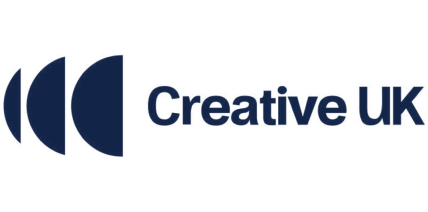This article was written by Decision Magazine for WardWilliams Creative and Creative UK.
When in trouble, when in doubt, run around, scream and shout. It’s a fair description of chaos, but that isn’t how Chaos, the creative agency, actually functions.
“Anything but,” says managing director Peter Campbell.

Embrace the Chaos
Indeed, the name of the agency derives from actively embracing the chaos that clients face because of the chaotic situations that clients might face with economies, markets, competition, opinions and attitudes, business priorities, company structures, audiences, technology, budgets…
“A creative agency has to help clients achieve clarity and stability in a world of flux,” Campbell paraphrases. “All this unpredictability is what fires us up.”
In line with this, Chaos operate a ‘dynamic studio’, whereby for one day a week they tackle challenging projects in real time, as it were – as opposed to planning them ‘on paper’. “That dynamism enables us to identify where there are going to be problems, and we go in prepared to deal with that chaos,” explains Campbell. “It makes us extremely good at rapid reaction.”
As day-to-day marketing communication services become more commodified, Chaos are focusing increasingly on the upstream: the more added-value, strategic and branding work that companies need but don’t have the resources to do internally.
The benefit then is that having been involved in actually developing the brand strategy, Chaos are in a good position to win the downstream work associated with it.
Creatively Trained Free Radicals

He believes an agency has to pro-actively encourage creative thinking. “Coming back to the chaos thing, we are a bunch of creatively trained free radicals, prepared to be the devil’s advocates, who embrace fresh thinking no matter how crazy it might seem at first. It’s our way of arriving at new ideas. We do the brainstorming and water-cooler moments, but the point is that a creative agency has to look for something that’s different, unusual or disruptive, and encourage staff to share ideas and knowledge. There’s no such thing as a stupid idea. We know from experience that someone’s daft idea will be someone else’s inspiration.
“I think creativity is often a juxtaposition of two or more ideas, and they don’t have to be original as such – the creative bit is thinking, you know what, if we do this, it would look like that, or wouldn’t it be cool if this idea also did this and that.”
Campbell, an art college-trained graphic designer, set up the business in 2002 after working in various agencies. “My aim was to have a boutique, creative agency that was very much both a commercial and
Keeping the Balance
With thirty staff in the UK and fifteen in Switzerland, Chaos have a fairly flat structure: three directors and then a layer of experienced account directors and senior creatives. “This means we can tell clients that work won’t be passed to a junior, as we hardly have any,” says Campbell.
He spends about two-thirds of his time on creative and brand strategy, business development, accounts, finance, “and then all those other things that get in the way but are necessary.” He says: “Even though I trained as a designer, I have always had a feel for business. I understand figures, I get them. I can see if projections look low or if we need to make more margin. It means I can sense the pulse of the agency.”
But he has made a point of remaining involved in creative activities, believing that an agency owner should never be all ‘business’. “Even though I’m the managing director I don’t sit in an ivory tower, because I believe delivering creativity is also about collaboration,” he explains. “I have a view on everything and I often stick my oar in, probably, sometimes, to everyone’s annoyance.”
Chaos are one of very few independent agencies in Design Week magazine’s top 100 and Campbell relishes not being beholden to a group HQ. That’s not to say he would never sell to a big agency if the fit was right, and he believes every business should think ahead to a possible exit by building up a good management team. “In 2016 we set out what we call the 5:5 plan, which is to deliver a target of £5million fee income within five years,” says Campbell. “Once an agency hits £5million, it becomes more desirable as a purchase. We are not there yet but when we are, we’ll be even more on the M&A radar, and a more valuable proposition.
And
Impact of lack of vocational training for creative industries
Having been an external advisor to a creative arts university, Campbell believes that one of the challenges for the creative industries is a lack of vocational training on university courses. “Either they are too art based or academic and not commercial enough, so what happens is that students come out after three years and have to do internships for bugger all money just to learn the ropes,” he explains. “Universities should be getting them ready for work with proper vocational courses. Generation X and the millennials expect more, quicker, but they can’t achieve it if they have not got the skill-set in the first place to be able to hit the road running.”
But what the new generation bring to the table is their ability to think creatively. “They are less bound by convention,” observes Campbell. “They decide what to do and then work out how to do it. Older generations can block themselves from creative thinking as their reaction can be, oh, we can’t do that because I don’t how we would go about it.”
Campbell has also identified the melding of artificial intelligence and analytics, and a move to outdoor, animated advertising. “That’s where traditional and digital are merging,” he says. “I doubt if you will see any static advertising in five years, it will all be digitally driven. You will even have a situation where advertisers know from your phone where you are and they will promote to you based on that knowledge.”
Retargeting and Digital marketing backlash
There is also a trend for what is known as retargeting, for example when Facebook shows adverts based on recent internet browsing behaviour. But not everyone likes this, Campbell accepts. “When you go to a website to look at a holiday and then the next day adverts for holidays keep popping up on Facebook, it’s a turn-off.”
So there could be a backlash against digital marketing methods, with direct mail enjoying a resurgence. Campbell is seeing this already, partly as a result of increased data protection regulation and also as a result of people’s diminishing attention span when it comes to looking at marketing material. “When you think of engagement levels, people give milliseconds to an email, but if they have to physically open something, engagement is longer anyway and then you get more engagement time,” he explains. “The consumer really is king. They make the decisions about what they want to read, and in what format.”
Meanwhile, more businesses are discovering the power of creative design in the development and marketing of their products and services, believes Campbell. “The customer is buying not just because of need but what it says about them, how it looks, and the brand experience. Apple and the automotive and fashion industries are the best examples of this. Add to this that British design is considered to be among the best in the world in certain emerging and growing overseas markets such as south-east Asia), and that generates big potential for creative agencies to sell their services overseas.”







